Hi friends,
A couple fun things this week: on Monday, The Atlantic recommended reading The Portrait of a Mirror with someone you love. Then yesterday, Literary Hub published a new essay of mine: “Mirror and Window Both: The Brief Superabundance of Aubrey Beardsley.”
The Beardsley piece concludes with a little note about the books that helped me write it, above all Linda Gertner Zatlin’s exquisite Aubrey Beardsley: A Catalogue Raisonné. Its volumes are probably the most beautiful books I own, and worthy of glamour shots. You’ll find plenty of these below.
In sharing them, I thought I might also highlight a little bonus detail in Beardsley’s work. I pressed up against my word limit for Lit Hub barely even touching on his knack for fashion. There are all the resplendent robes and drapery, of course, of which I’m perpetually in awe. But today, I specifically want to call your attention to his treatment of shoes and feet.
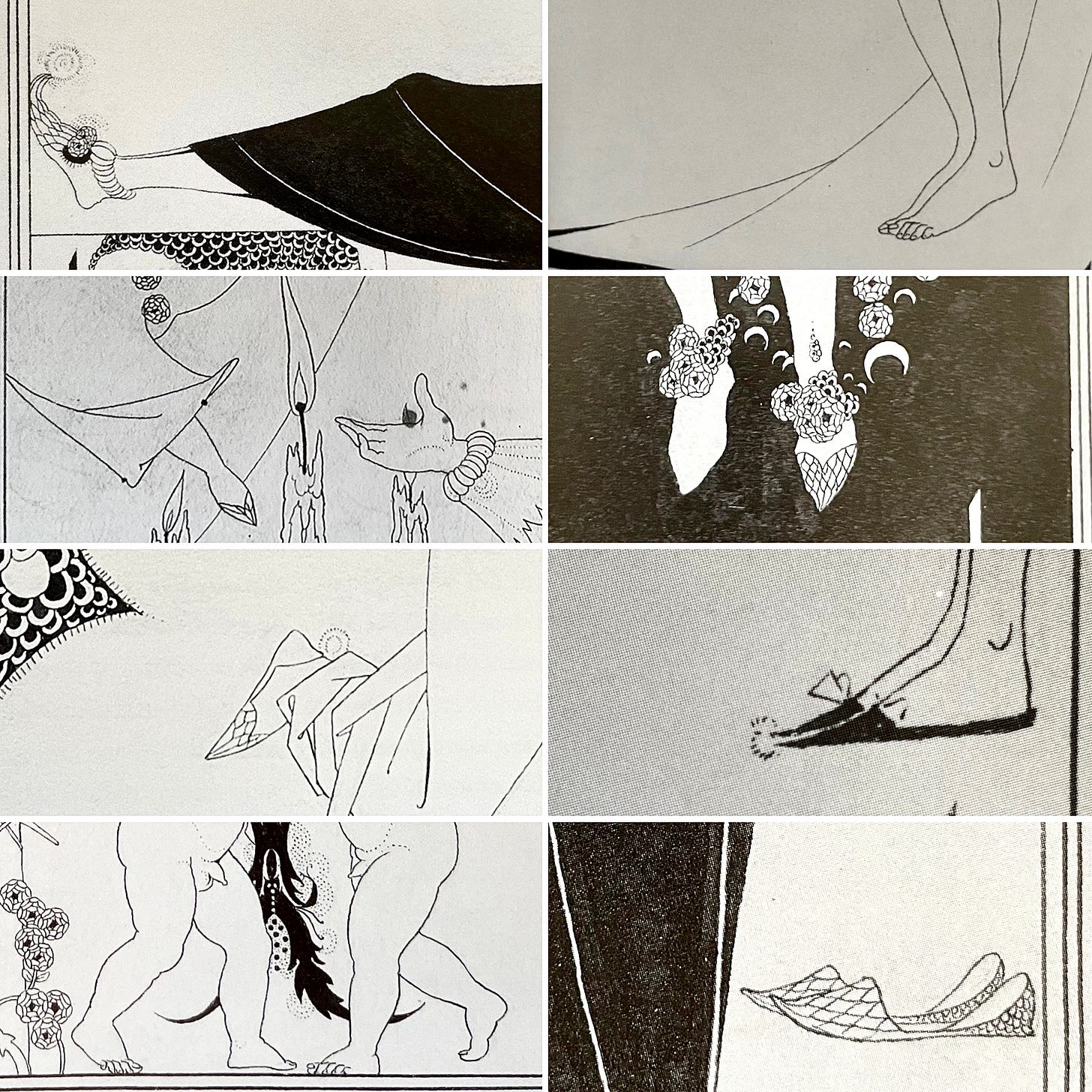
Crosshatched and pom-pommed, on and off and half-on, the delicate slippers of the Salome set have what feels like a special, web-like intentionality, true to yet transcending Wilde’s text. Feet recur in the circular string of metaphors that conflate Salome and the moon; they “are of silver,” and “like little white doves.” Herod repeats the latter as Salome is preparing to dance for him, exclaiming: “Ah, you are going to dance with naked feet. 'Tis well!—'Tis well. Your little feet will be like white doves. They will be like little white flowers that dance upon the trees.”
In The Stomach Dance, Beardsley depicts Salome half-shod, as if in the coquettish process of removal. The rosettes around her ankles scatter behind her in a trail of crescents. The remaining shoe we see strongly resembles the design Salome also wears floating in The Climax, the profile view revealing a nimbus-like pom-pom on the heel. Interestingly, these two images seem to connect more broadly when placed side-by-side. The strong lower swath of black has the same textured edging, while the right half of Salome’s phallic drapery almost wafts into the cloudy background of The Climax.
It is tempting to connect these slippers to the conspicuously empty ones in The Dancer’s Reward as well, but, as Zatlin summarizes, this is a matter of some scholarly dispute: “Hodnett believes Salome’s slippers are ‘gratuitous[ly]’ included, but Fletcher interprets the empty shoes as John’s and therefore as emblems of his death (as in The Death of Pierrot […]).” Their design is subtly different from those in The Stomach Dance and The Climax—the vamp is straight rather than heart-shaped, the toe angles up, and the heel’s more ornate. Not that these discrepancies alone would be conclusive, the shifting appearances of the various players being a signature feature of the series.
The connection to Pierrot’s empty shoes is more persuasive. Furthermore, while feet are often associated in the play with femininity, they are also phallic and imbued with the sort of coded, fetishistic sexuality that Beardsley and Wilde alike seemed to feel they could get away with, plausible deniability on their side.
When Salome attempts to seduce Iokanaan in markedly masculine fashion, oscillating between obsequity and insult, she taunts: “Thy mouth is redder than the feet of the doves who haunt the temples and are fed by the priests.” This implicates him, too, in the symbolic conflation of Salome and the moon, introducing a masculine element into the previously feminized foot imagery. “It is redder than the feet of him who cometh from a forest where he hath slain a lion, and seen gilded tigers,” she continues—right before the Young Syrian commits suicide, and her own feet dance victoriously on the blood Herod’s slipped in.
Personally, I think Hodnett and Fletcher might both be right; that the empty shoes in The Dancer’s Reward could well be of deliberately ambiguous ownership. Perhaps, more precisely, they are undergoing a transfer—at once the shoes John’s stepped out of and that Salome will step into, completing her conquest.
We can’t talk about phallic feet without touching on the grotesque lackey in Enter Herodias, echoed as a figurine on Salome’s vanity in Beardsley’s first version of her Toilette, as well as Salome on a Settle, Maîtresse d’Orchestre. These are all pictures that Lane censored in one way or another, though the inconsistency of his objections is wryly recounted by Zatlin. Of Enter Herodias, she writes: “Lane caught the obvious nudity but missed or ignored the fetus figure’s monstrous (covered) erection and the phallic candleholders, which he accepted as antique prickets probably because of the power of Beardsley’s line.”
The fetus’s foot, pointy and phallic itself, balances his erection compositionally and points to the candleholders. In the Toilette of Salome, meanwhile, its miniature foot directs us toward the effeminate tea server, mirroring the masturbating seated figure’s erection. Both the masturbator and tea server’s dainty, pom-pommed shoes, as well as the tea spout, serve to enhance the phallic imagery surrounding Salome at her most feminine.
Likewise of Salome on a Settle—which I have to say, relative to the rest of the series, seems positively PG to me—Zatlin hypothesizes “John Lane was uneasy about the presence of sexual details: the open dressing gown, the fat tassel (perhaps a displaced phallus) and the baton (possibly a dildo).” To this list I’d add her (also phallic) foot, which draws the eye thanks to its little black shoe.
I’ve again focused on the Salome set, but here are a few more pictures from the broader catalogue featuring choice footwear:
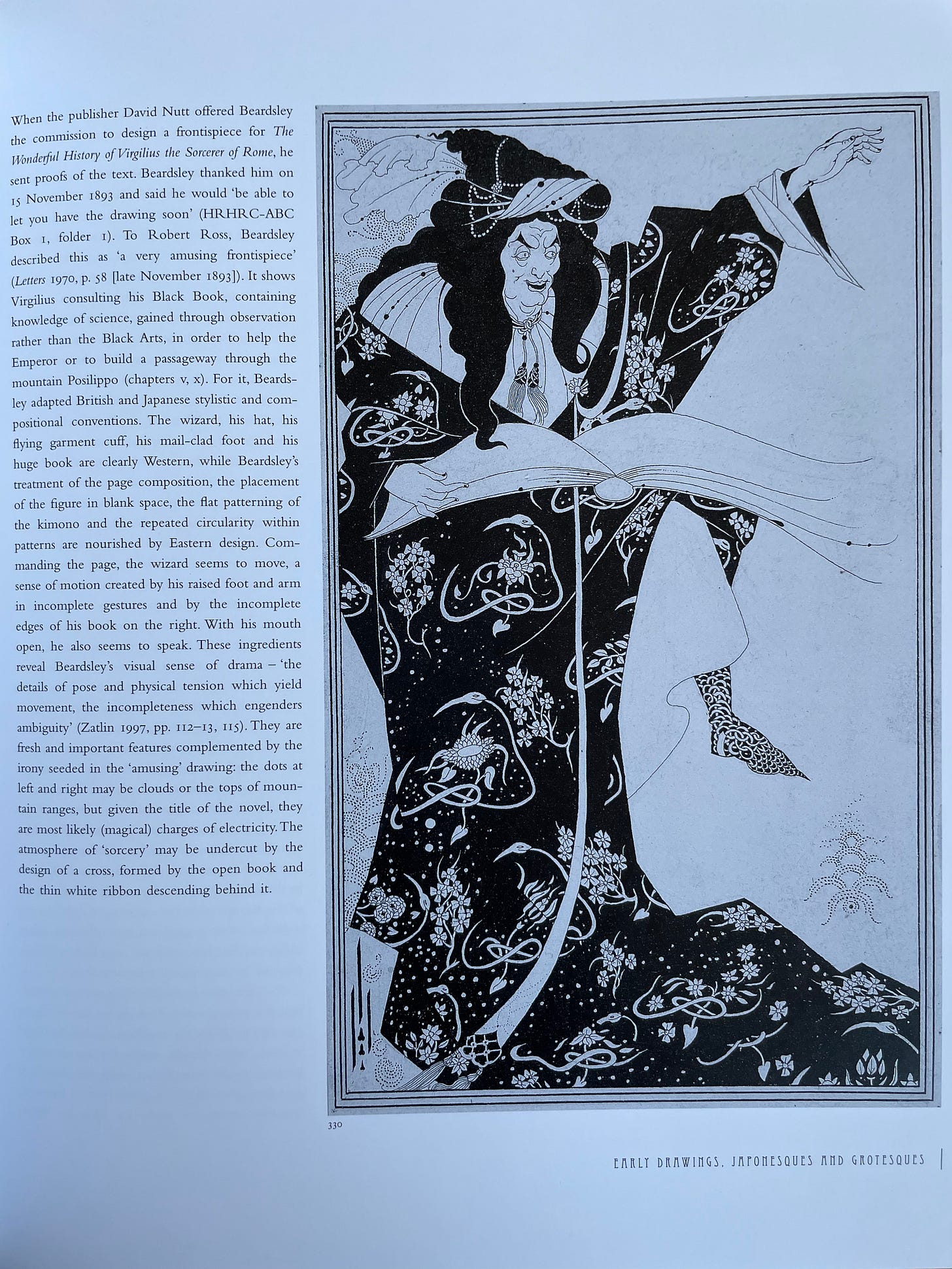


Thanks for reading, I hope you’ve enjoyed the images, and special thanks to my parents for the catalogue—an exceptionally decadent Christmas gift.
Natasha




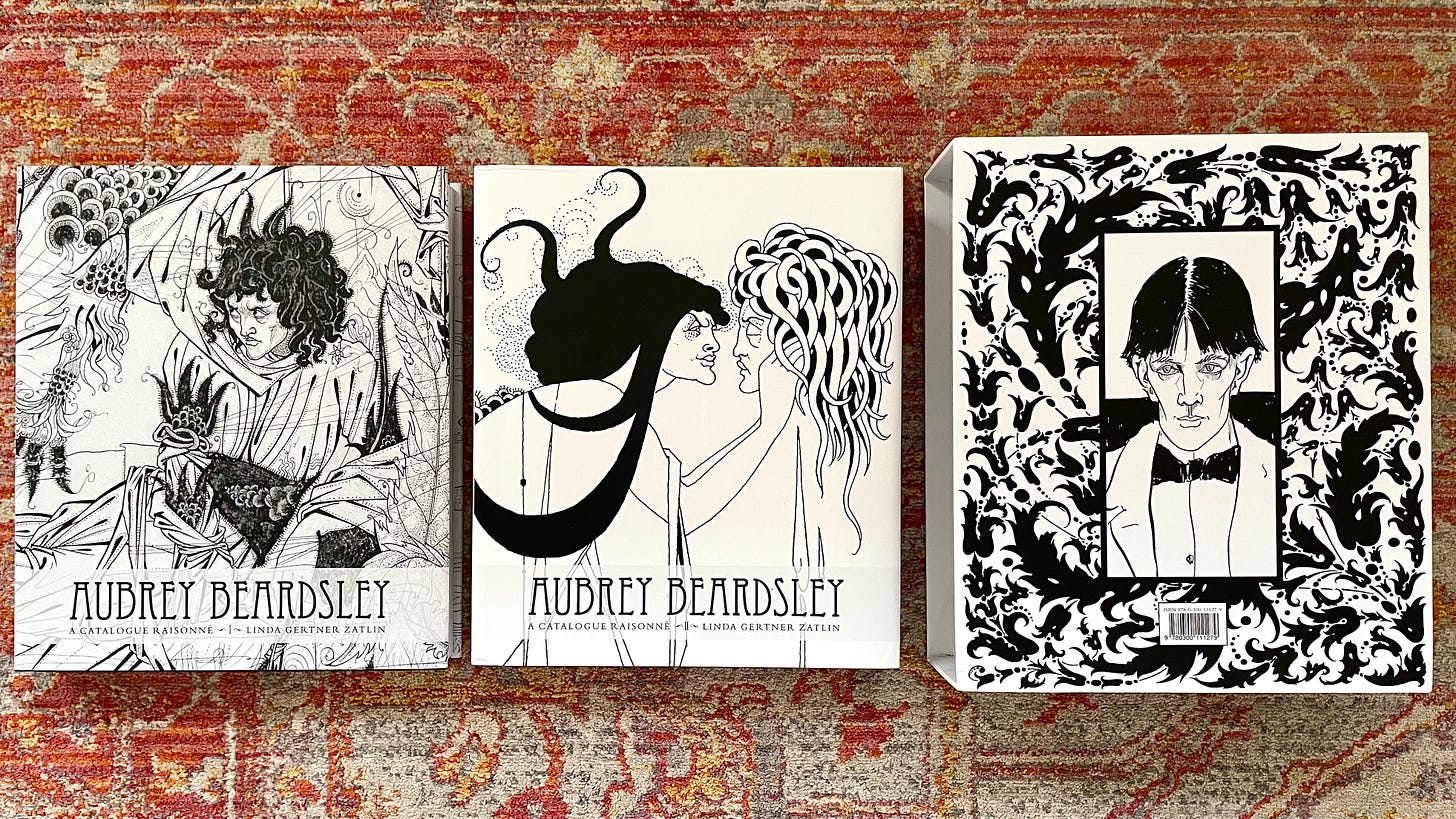
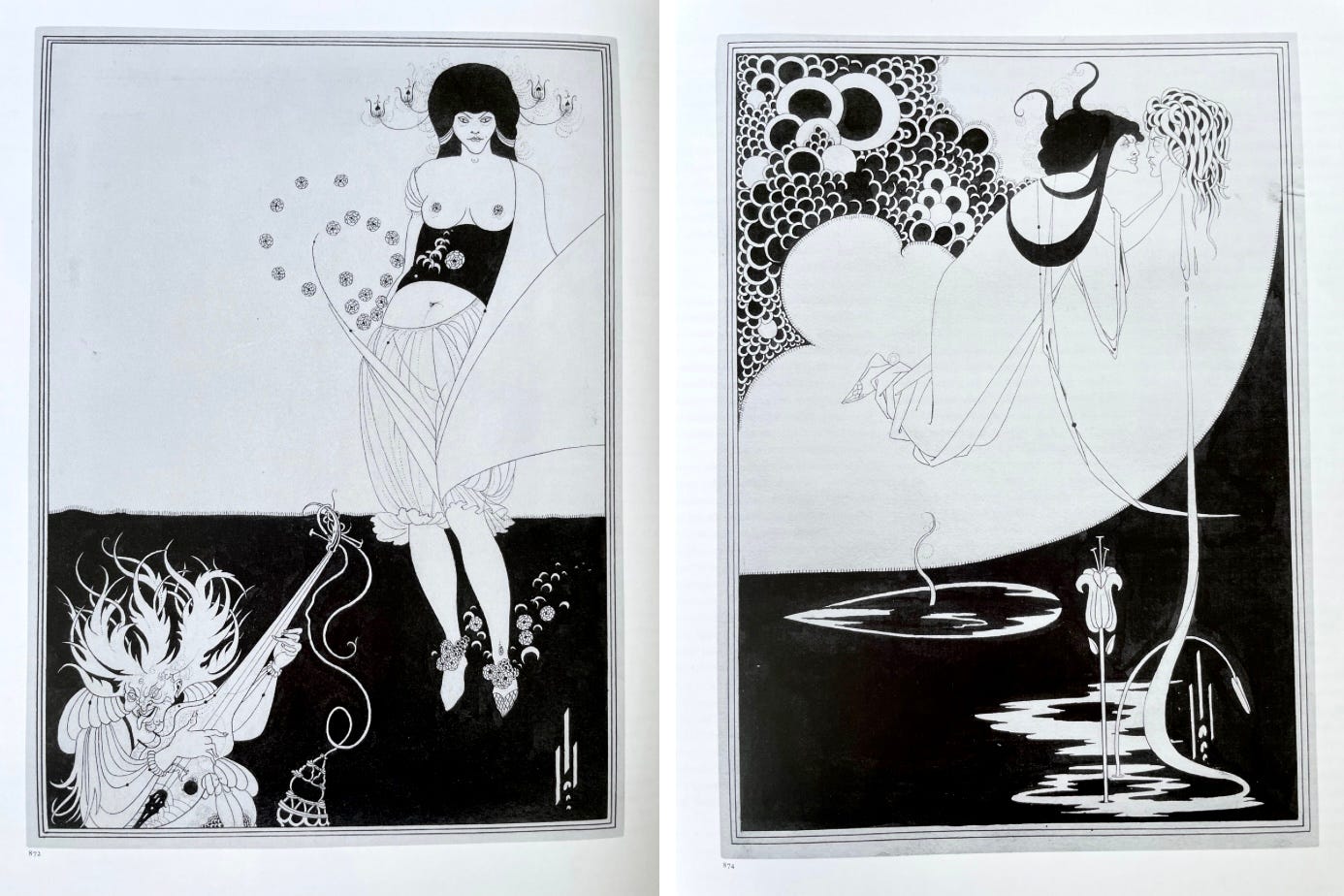
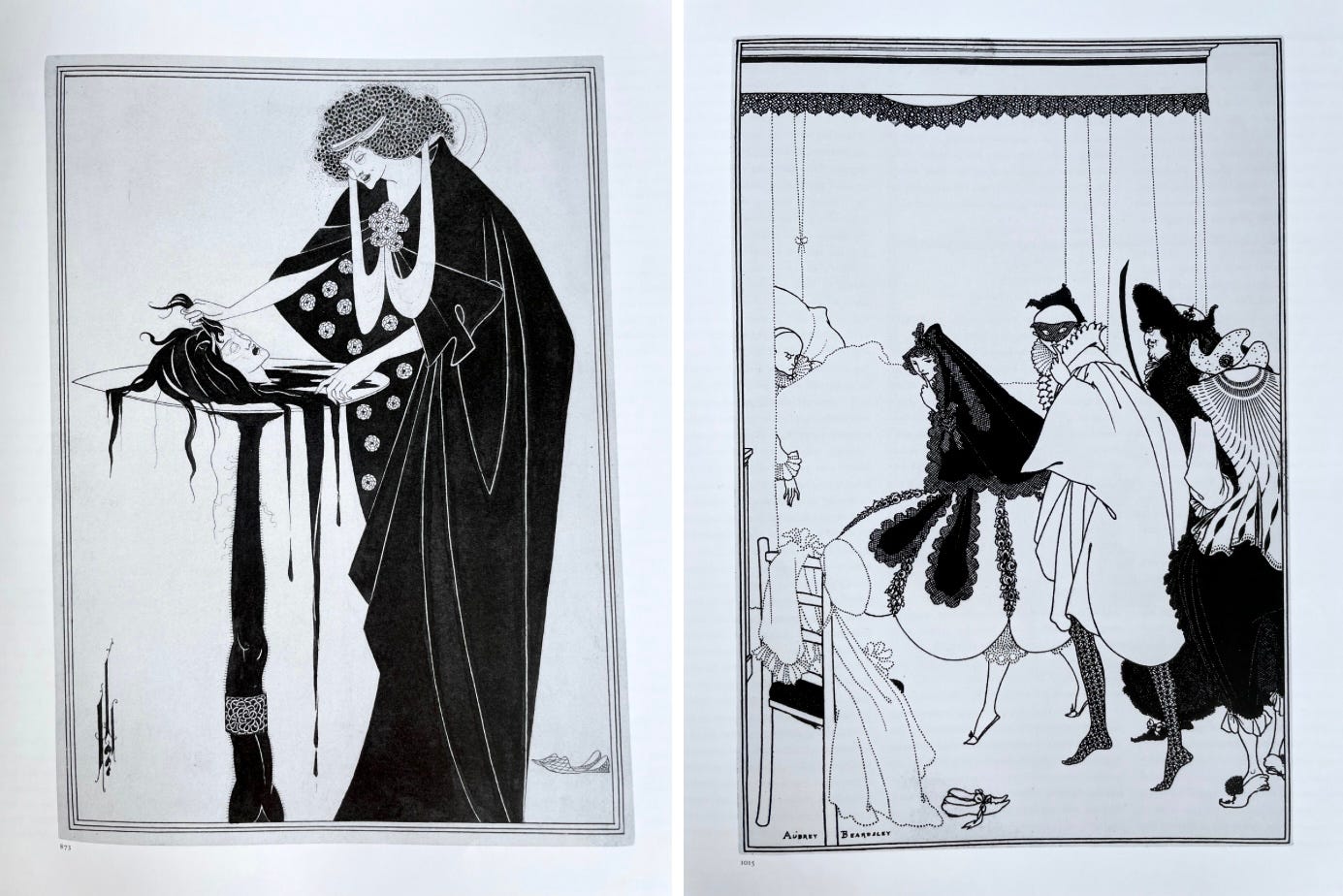
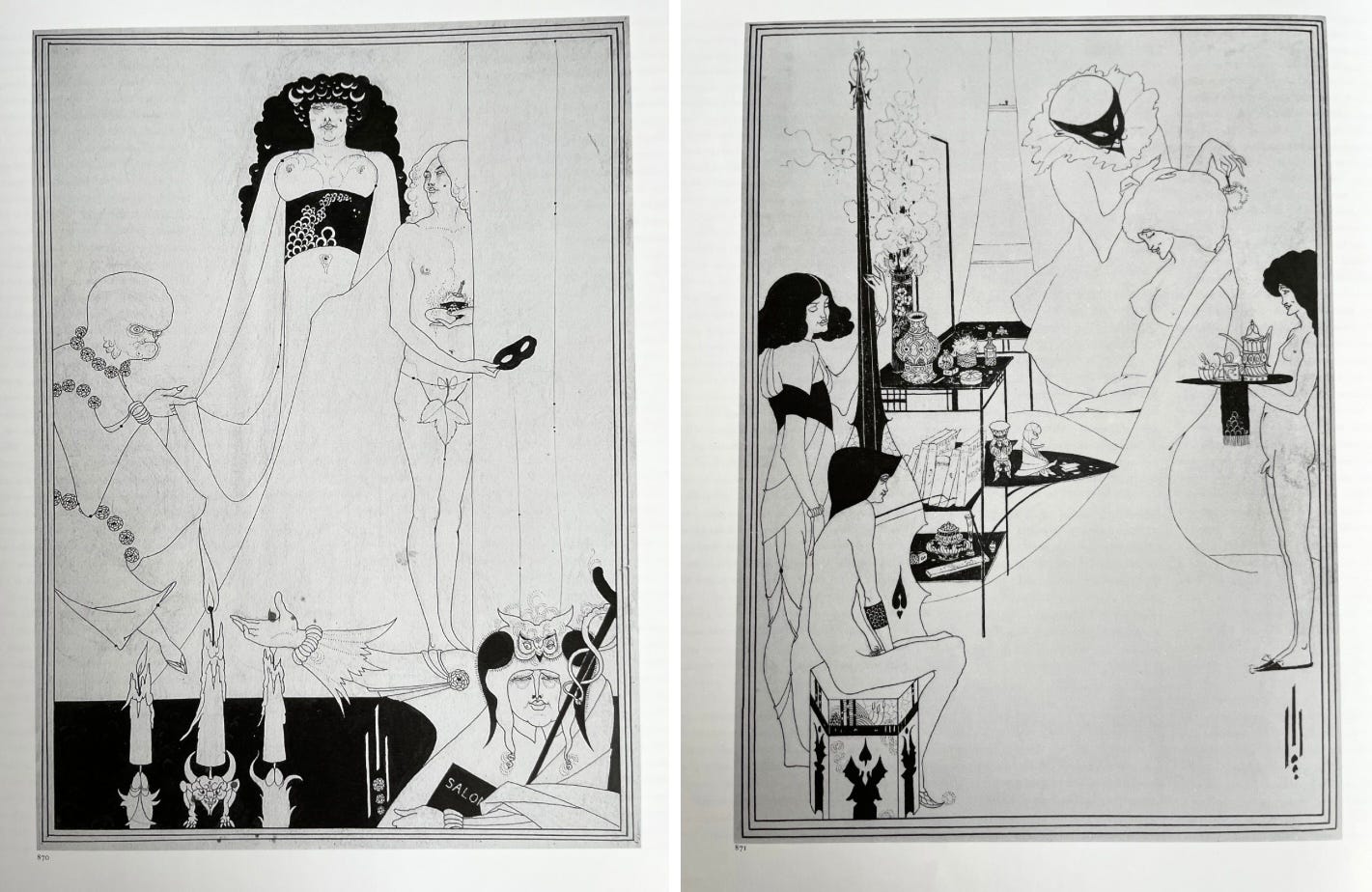



This is quickly catapulting into one of my favorite newsletters on substack